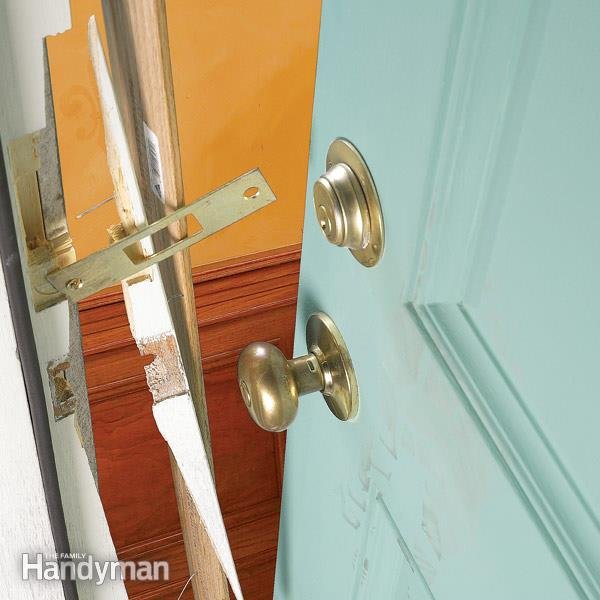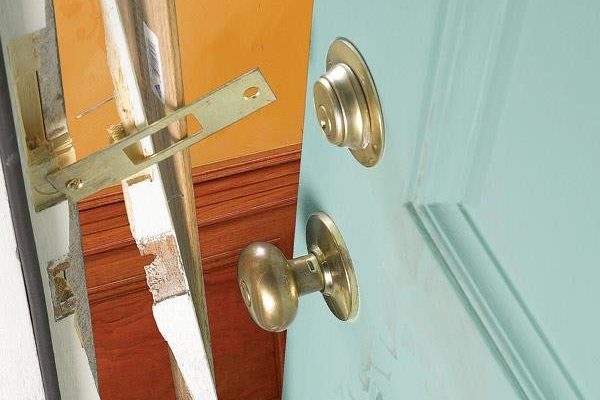
Securing loose door hardware doesn’t have to be complicated, though. Much like tightening a wobbly table leg, it’s all about finding the right tools and methods. In this article, we’ll explore the best ways to tighten those pesky screws, reinforce your hinges, and ensure that your door operates smoothly. Whether you’re dealing with a knob that won’t budge or hinges that seem to be on strike, let’s dive into the solutions that can bring your door back to life!
Identify the Problem Areas
Before you start securing loose door hardware, it’s essential to identify what’s causing the issue. Take a moment to inspect your door and its hardware closely. Is the doorknob loose? Are the hinges wobbly? Or maybe the strike plate doesn’t align properly?
Start by giving the doorknob a gentle twist. If it feels loose, you may have a simple screw issue. Check for any visible gaps or unusual movement. Hinges often wear out over time, especially on an old softwood door. If you see a gap between the hinge and the door frame, it’s a red flag.
Next, examine the condition of the wood. Softwood can easily chip or splinter, making it hard for screws to hold. If the wood around the hardware is damaged, it might require a more in-depth repair. Remember, recognizing these problem areas is the first step toward a secure door.
Tools You’ll Need
Before you dive in, gather the necessary tools. Having everything ready will make the process smoother and quicker. Here’s a quick list to get you started:
- Screwdriver: A flathead and Phillips screwdriver will cover most screw types.
- Wood glue: If the wood is damaged, wood glue can help reinforce the area.
- Wood filler: This is essential for repairing any chips or holes in the wood.
- Drill: For more significant repairs, a drill can help create pilot holes.
- Clamps: Useful for holding pieces in place while the glue dries.
Having the right tools not only saves time but also ensures a better repair. It’s like having your favorite recipe ingredients laid out before cooking—everything is easier when you’re organized!
Secure Loose Doorknobs
Doorknobs are often the first piece of hardware to show wear. If your doorknob is loose, it might just need a simple tightening. Here’s how to secure it:
1. Locate the screws on the doorknob. Many have visible screws on the side or back.
2. Using your screwdriver, tighten all screws. If the screws won’t tighten because of the wood damage, you might need to use some wood glue or filler.
3. If the knob still feels loose, consider replacing the screws with longer ones for better grip. Just make sure they’re not too long to poke through the other side of the door.
After tightening, give the doorknob a good twist. It should feel more stable. Honestly, a well-secured doorknob can completely change the feel of your door!
Fixing Wobbly Hinges
Hinges are critical to the door’s operation. If they’re loose, the door won’t swing correctly. Here’s how to tighten or replace them:
1. Check the hinge screws. If they’re loose, simply tighten them with your screwdriver.
2. If the screw holes are stripped, you may need to fill them with wood filler. Once the filler dries, drill a pilot hole and reinsert the screws using a longer screw for added stability.
3. Consider adding a shim if the hinge is misaligned. A shim is a thin piece of material that can help support and stabilize the hinge.
Tightening the hinges will not only help with door movement but also improve its alignment with the frame. Imagine opening your door and hearing that satisfying sound of smooth operation—it’s rewarding!
Reinforcing the Strike Plate
The strike plate is the metal piece that catches the latch when the door closes. If it’s loose or misaligned, your door might not latch properly. Here’s a step-by-step to reinforce it:
1. Inspect the alignment. When closing, does the latch fit snugly into the strike plate? If not, it may need adjustment.
2. Tighten any loose screws on the strike plate.
3. If the holes are stripped, fill them with wood filler, then drill new pilot holes. You could also use longer screws for better grip.
4. Adjust the position by moving the strike plate slightly if necessary. This might take a little trial and error, but a properly aligned strike plate can make a world of difference.
By reinforcing the strike plate, you enhance both the door’s security and its functionality. It’s like fitting a key into a lock; everything should align perfectly.
Consider Adding Additional Support with a Door Reinforcer
If you’re still facing issues after tightening everything up, you might want to think about additional support. A door reinforcer can provide extra strength, especially if your door is old or made from softwood.
1. Purchase a door reinforcer kit. They’re available at most hardware stores and come with all the necessary screws and equipment.
2. Follow the manufacturer’s instructions to install it. Typically, this involves placing the reinforcement over the area where the lock and strike plate are.
3. Ensure that everything is aligned correctly before securing it with screws.
Installing a door reinforcer can add an extra layer of security and stability, making it harder for someone to force the door open. It’s like putting on a protective coat—it helps the door withstand wear and tear better.
Regular Maintenance for Longevity
Finally, keeping your door hardware secure is an ongoing task. Just like you wouldn’t skip routine oil changes in your car, regular maintenance for your door is key.
– Check for loose screws every few months, especially if you notice anything feeling off.
– Apply lubricant to hinges and locks to keep everything moving smoothly. This simple action can prevent wear and tear from building up.
– Inspect the condition of the wood regularly. If you notice any damage, address it promptly to prevent further issues down the line.
By staying on top of these small tasks, you’ll ensure that your door remains functional and secure for years to come. It’s all about building good habits!
Securing loose door hardware on an old softwood door might seem daunting, but with the right tools and a little patience, it can be a straightforward task. By identifying problem areas, using the correct methods for tightening knobs, hinges, and strike plates, and considering reinforcements when necessary, you can dramatically improve your door’s stability and security.
Regular maintenance is the cherry on top—it keeps everything in top shape. Remember, an old door doesn’t have to feel or operate like one. With these tips, you’ll breathe new life into your door and enjoy its charm for many more years!
